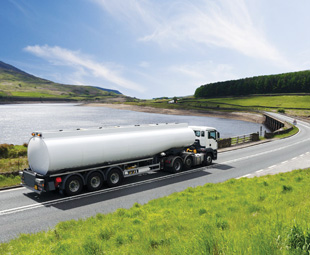Yellow-lane driving

Pleased about the courteous behaviour shown by many long-distance truck drivers, VIC OLIVER is nonetheless worried about their seeming ignorance of the law when it comes to driving in the yellow lane.
During a recent long distance trip, I was pleased by the levels of road-courtesy and professionalism shown by many long-distance truck drivers.
Most are driving big rigs – up to 22 meters long, high-powered and, at times, difficult for other road users to overtake. However, I noticed that where possible, most try to enable other motorists to overtake them in a safe manner, either by moving into the yellow lane or by scanning the road conditions ahead and indicating to the driver behind them that it is safe for them to overtake.
Following some nasty accidents in the past, however, moving into the yellow lane is an issue that many long-distance heavy vehicle operators have debated for years.
To eliminate the risk of their vehicles being involved in an accident when driving in the yellow lane, many operators have instructed their drivers not to drive in the yellow lane. Some have even put stickers on the rear of their vehicles notifying other drivers that the vehicle is not allowed to drive in the yellow lane.
This is all good and well, but it does result in other road users getting frustrated and irritated, especially when on a single-lane road and it is safe for the truck driver to move over and allow faster vehicles to pass. The build up of frustration by the driver tailing the slower vehicle can prompt them to become reckless and to attempt to overtake the bigger vehicle in unsafe conditions – which can result in both vehicles being involved in an incident.
In my opinion, and in accordance with the Road Traffic Act Regulation 298A, heavy trucks should move over to the left shoulder of the road when it is safe to do so. However, many accidents have occurred when heavy vehicle drivers have used the yellow lane without an understanding of when it is safe to do so.
Questioning a few long-distance drivers at one of South Africa’s border posts, it became clear that some don’t know the law regarding the use of the shoulder of the road (driving in the yellow lane) as described in the relevant National Road Traffic Act regulation.
A clear understanding of this regulation would greatly reduce the chances of a truck becoming involved in an accident.
The traffic regulation clearly states that it is illegal to drive on the shoulder of the road.
However, the regulation makes provision for a vehicle to drive on the shoulder of a public road while being overtaken by another vehicle under the following conditions:
• Only in the period between sunrise and sunset (daylight hours);
• Only on a public road which is designated for one-lane traffic in both directions;
• Only when the driver can clearly see 150 meters ahead; and
• Only if the driver can do so without endangering themselves, other traffic, pedestrians or property.
The drivers of faster vehicles have an important part to play too – they must allow the heavy-duty vehicle to re-enter the road, especially when approaching an unsafe section of road or if the driver has no clear vision of the road ahead. Not allowing the slower heavy-duty vehicle to move back into the road can cause accidents, and this is one of the main reasons some operators don’t allow their drivers to use the yellow lane.
If all drivers understand the road traffic regulations pertaining to the use of the shoulder of the road, and if they show respect and courtesy to their fellow road users, yellow-lane driving would be a safe driving practice.
One of this country’s most respected commercial vehicle industry authorities, VIC OLIVER has been in this industry for 49 years. Before joining the FOCUS team, he spent 15 years with Nissan Diesel, 11 years with Busaf and seven years with International.
Published by
Focus on Transport
focusmagsa




 Big news from FOCUS on Transport + Logist
Big news from FOCUS on Transport + Logist


 !
Starting 1 April, every
!
Starting 1 April, every


 FUSO: Driving the Future of Mobile Healthc
FUSO: Driving the Future of Mobile Healthc



 A brand
A brand




 Wondering about the maximum legal load for a
Wondering about the maximum legal load for a 
 The MAN hTGX powered by a hydrogen combus
The MAN hTGX powered by a hydrogen combus

 Exciting News for South African Operators
Exciting News for South African Operators


